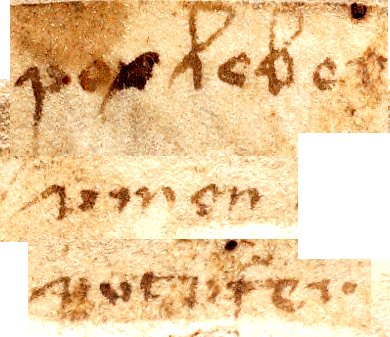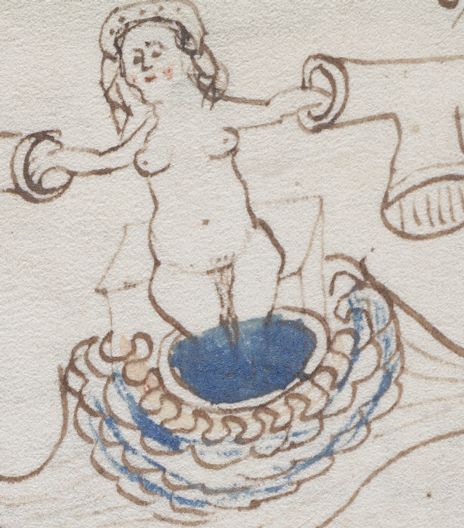In early 2008, I became interested in the mystery surrounding the first invention of the telescope. The year was the 400th anniversary of the first Dutch telescope patent application – yet the more accounts and explanations I read (even the very best ones, such as Albert van Helden’s exemplary “The Invention of the Telescope”), the less I believed any of them. For the greatest part, probably the most appropriate take on the evidence as it stands is simply this: a cultured state of tolerant disbelief.
But all that seemed to change when I stumbled upon a reference to some little-known research by José Maria Simón de Guilleuma, a Spanish historian from fifty years ago. A Barcelonan optometrist by trade, he had long been intrigued by Juan Roget, a Catalonian spectacle-maker from the same town who the Milanese courtier Girolamo Sirtori claimed was the real first inventor of the telescope. Fascinatingly, when I combined Simón de Guilleuma’s (apparently archivally precise) references with the telescope history research from the decades following his death, what emerged was far from the generally accepted historical account – taken as a whole, it suggested a radically different historical narrative involving a mad dash across Europe to the Frankfurt Fair in September 1608.
And so I wrote an article that brought all these pieces together, and (as an intellectual historian) presented the detailed secondary evidence as best I could, together with a suggested reconstruction which attempted to reconcile all the differing accounts into a satisfactory monoptic timeline: this first appeared in History Today’s September 2008 edition, with a translation by Enrique Joven following on in the Spanish telescope magazine Astronomia in October 2008.
(Here’s a link to my current set of bibliographic references on Juan Roget: this should be a useful starting point for anyone wanting to read more about this subject.)
However, the nagging question remained of whether my whole story was properly supported by the primary evidence. And so a few days ago, I went for a (carefully chosen) short family holiday to Barcelona: while my wife and son explored the foody wonders of the Boqueria, I instead headed off to the Arxiu Històric de Protocols de Barcelona (the “AHPB”) not far away, where the most relevant primary notarial documents in this story were to be found. What would I find?
The AHPB is part of the Col-legi Notaris de Catalunya: you buzz at a large (but fairly nondescript) door at #4 Calle de Notariat (ignore the sign that tells you to ask at #2, you’ll only get sent back to #4) – it’s the one with a surprisingly fancy “pan/tilt” hi-res entry camera. Go in and ask the guard at reception that you’re there to consult the AHPB, and he’ll direct you to the lift to go up to the second floor. Oh, yes, how could I forget the AHPB’s unnervingly James Bond-style lift, with four underground floors (-1 to -4), holding the 12,000 linear metres of storage.
Once you’re out of the lift, you find yourself in what feels like an embassy’s nondescript internal corridor, with only the giant circular “BIBLIOTECA” embossed in the floor (a bit like a film prop, it has to be said) to persuade you otherwise. Follow the corridor to the right, and you find yourself in a fairly bijou library area, with only a handful of tables for researchers to work on. Perhaps because of the short opening hours (10am to 1pm Monday to Friday, plus 4pm to pm on Wednesday), there’s a palpable feeling of urgency to the place, quite unlike most other research libraries I have been to.
To call up AHPB notarial documents, you:
- Find the appropriate section of the multi-volume printed inventory (arranged chronologically, broadly by century)
- Look up the particular notary’s name in the alphabetic index near the back to find the starting page number
- Turn to that page
- Scan forwards until you find whichever bound set of documents matches the date you are interested in
- Copy the call number(s) onto a request slip, together with the name of the notary
- Hand the request slip to the person on the small table on the right
…and your documents appear on your desk surprisingly quickly. Very quick, efficient, & straightforward.
The brick wall I immediately ran into was that even doing this cast significant doubt on the archival precision of that part of Simón de Guilleuma’s work relating to early mentions of telescopes by notaries. You see, he had referred to the four main documents I was hoping to see as:-
- Notary: Francisco de Pedralbes. Pedro de Cardona, 10 April 1593.
- Notary: Francisco de Pedralbes. Maria de Cardona y de Eril, 13 December 1596.
- Notary: Geronimo Gali. Jaime Galvany, auction held on 5 September 1608.
- Notary: Miguel Axada. Honorato Graner, 6th August 1613 (though this could well be in the Biblioteca de Catalunya instead).
The problem here is that according to the LL. Cases’ “Inventarii de l’AHPB” vols S.XVI and S.XVII/1, Jeroni Galí (call numbers 699/1 and 699/2) acted as a notary from 1635 onwards, while Miquel Aixada (call number 643/1) was a notary between 1622 and 1623. And so if Simón de Guilleuma got the notaries’ names right, it would appear that he got the dates significantly wrong… by 25+ years and 10+ years, respectively.
Now, it has to be said that it takes a while to get the hang of any historical handwriting, and I was extremely short of time: so I can’t claim to have read every word of every page in the documents I called up. But I can say that I didn’t manage to find any of the references I was looking for.
The most frustrating AHPB documents of all were those of Francesc Pedralbes, a notary from 1562-1599. For the two dates given (call numbers 426/106 and 426/116), the notary’s ink has soaked its way right through the paper, leaving each folio’s two sides of text awkwardly merged together – extremely difficult to read slowly, let alone fast. And so it might well be that I was indeed squinting hard at the two Pedralbes documents Simón de Guilleuma described, but unable to make them out at all.
[The irritating thing is that I didn’t know that the AHPB allows researchers to take cameras (I’d guess with the flash turned off?) in with them: so I could easily have taken photos of all the likeliest candidates to pore over at my leisure – but there was simply not enough time on that Friday morning before the AHPB closed to find my wife and borrow her camera.]
The problem, of course, is that the my article’s whole narrative (as far as 1608 goes) hinged on the timing. If a telescope was sold at a Barcelonan auction on 5th September 1608, then that is big news – but if that auction was actually held three decades later, it’s no news at all (which is, of course, why I went looking for this particular document). From what I’ve seen, I’d say that the odds are high that this did not happen in 1608 – hence the latter category beckons (unfortunately).
Right now, I have to say that this side of the research into the Spanish telescope appears stalled: not only do I not know why Simón de Guilleuma apparently got these dates so very wrong, I don’t know why Spanish historians haven’t checked this in fifty years.
Another thing I don’t currently understand is that when I asked the Biblioteca de Catalunya about these documents, they said that they were in the Arxiu Històric de la Ciutat de Barcelona (AHCB), and that:-
The sections of Francisco Pedralbes have the following topographical data: XII.3 and XII.9 of the Protocols notarials collection. The topographical data for Gali’s protocol is XIII.8 of the same collection
However, when I emailed the AHCB, they seemed to think that these would instead be in the AHPB. Given that there’s an air of uncertainty over all of this that I don’t claim to understand, I thought I ought to flag every detail: someone with more experience of the ‘system’ might very well be able to make more sense of it all than me.
All in all, I do think that this is something which a local history graduate student could probably get an interesting paper out of: for if Simón de Guilleuma didn’t simply make this all up, what was he looking at?
* * * * * *
Of course, you might simply think that all the above casts doubt on Simón de Guilleuma’s reputation as an historian. Yet an entirely parallel lead popped up since my September 2008 History Today article, which appears to vindicate the other half of his research (into the life of Juan Roget and his nephews).
After my History Today article came out, University of Madrid urban historian Jim Amelang – whose name tourists may possibly recognize as a co-author of the book “Twelve Walks Through Barcelona’s History”, as mentioned in the Time Out guide to Barcelona – contacted me to say that he had found an interesting research lead on the Roget family in the AHPB.
He documented it on pp. 383-4n of his 1998 book “The Flight of Icarus: Artisan Autobiography in Early Modern Europe”, Stanford: Stanford University Press (I ordered a copy last year, but it got cancelled by the bookseller after six months, *sigh*).
I can do no better than to quote in full Jim Amelang’s emailed summary of what he found:
It is the 10 Dec. 1617 testament of one Hierónima Verges, wife of Andreu Verges, a tanner of Barcelona, and daughter of Joan Roget, “ullarer” (eyeglass maker) and his wife Hierónima, both deceased. I fear that this document says nothing about astronomy or telescopes. However, it does mention several family members, especially a brother named Joan Roget, who lived in Barcelona on the Plaça del Blat, and to whom she left 5L for mourning clothes, and her uncle Magi Roget, who was like her father identified as an ullarer. Apparently she died on 19 December. It’s not much to go on, but it does give us a bit more information about the family, including the fact that the elder Joan passed the trade on to other members of his tribe. Also, the elder Joan was referred to as a “citizen of Barcelona“, which meant that he had been residing some time in the city before his death (which did not necessarily take place there). The precise reference, in case you are interested, is Arxiu Històric de Protocols de Barcelona/Antoni Masclans, Manual de Testaments, 1610-1630, s.n.
So, we are left with an apparently contradictory situation in which the half of Simón de Guilleuma’s research into Juan Roget seems confirmed as accurate, while the other half looking for mentions of early telescopes in Barcelonan wills, auctions and inventories seems possibly inaccurate.
I honestly don’t know what to make of all this – am I perhaps missing something really big (such as the existence of two separate Barcelonan notaries both called “Jeroni Gali”, with parallel documents in two different archives?), or did Simón de Guilleuma ‘tweak’ the 1608 and 1613 dates to make Sirtori’s claim of a pre-September 1608 Spanish telescope seem more convincing? According to his family, he simply wasn’t that kind of a person: but what, then, would explain it all?
The only solid thing I can say is that my inexperience with (and lack of time and camera in) the Barcelonan archives was a hindrance: and that, realistically, I think it would take at least a week to properly chart out what documents are (and are not) in what archive. Why is nobody in Spain looking at this? To me, that’s the biggest mystery of all.


